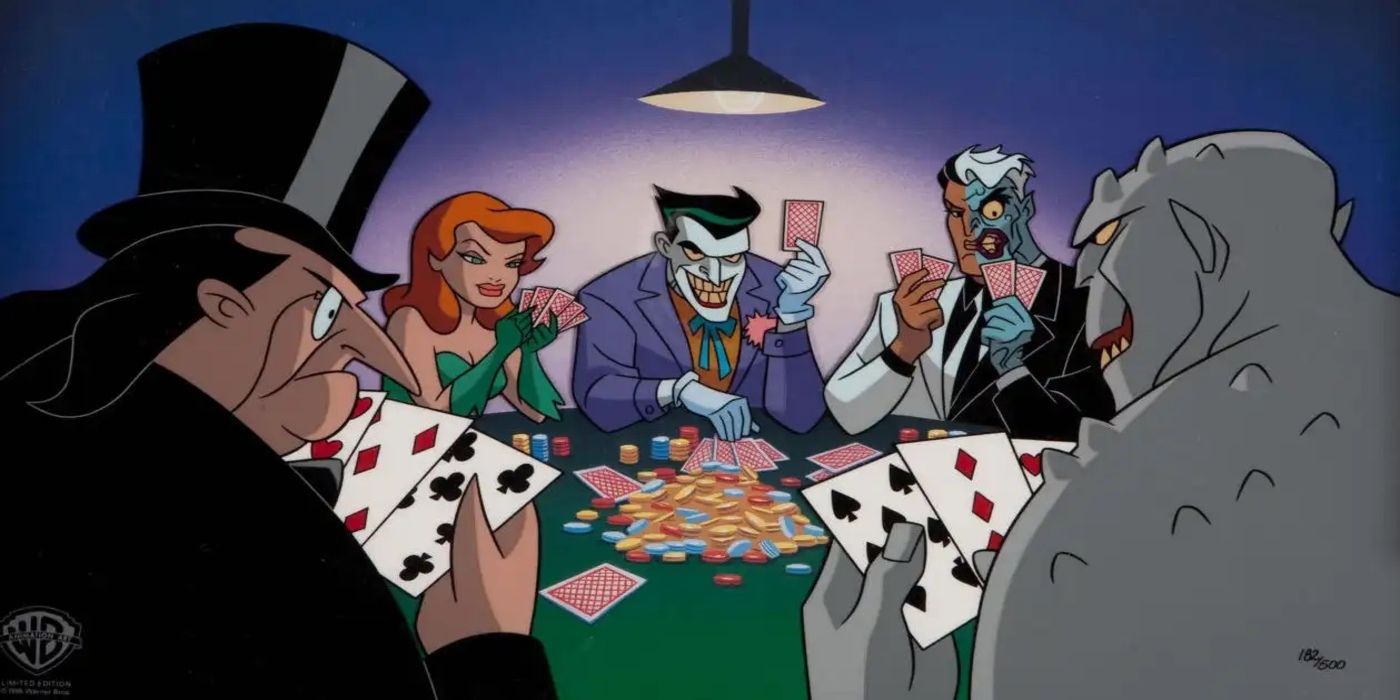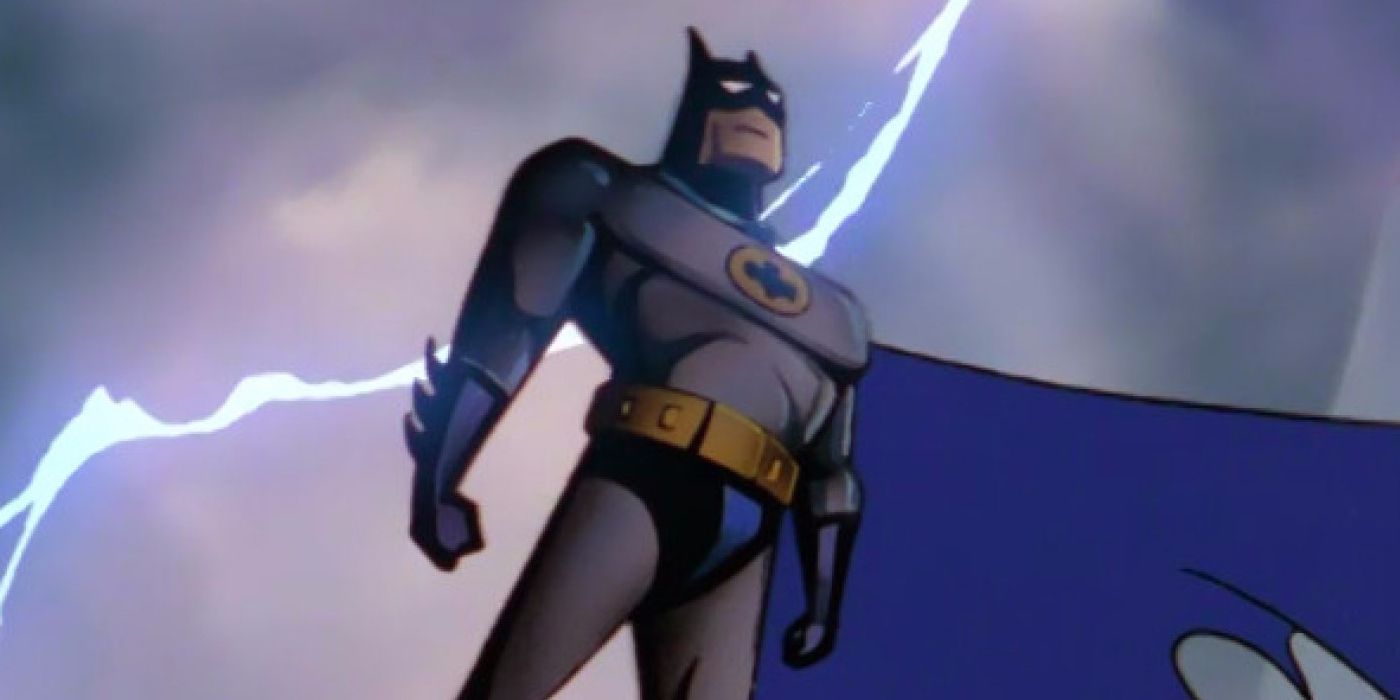The Batman, set to premiere next year, has made it abundantly clear that it will be diving into a dark look at the beloved superhero, a trend that has long become the standard for the franchise. Among Batman films of recent memory, the Caped Crusader has done battle with gritty and realistic takes on his colorful rogues gallery, but is pitting the Bat against macabre foes time and again missing some of the franchise's charm?
The upcoming Batman film has revealed most of its cast, including what can be assumed to be most of its antagonists. Many classic characters appear, including a seemingly classic take on Carmine Falcone, an up-and-coming version of the Penguin, and most radically, The Riddler reimagined as a Zodiac Killer style cryptic murderer.
Tone is important in any narrative, and selecting a dark tone for Batman is now more the rule than the exception, it would almost be more daring to make the Bat silly again. With that in mind, relentless darkness often has the downside of feeling bland, robbing the narrative of a sense of fun. Even as similar works use similar tones, the films continue this trend. Batman is known as one of the most serious superheroes in the business, but that doesn't mean that every aspect of the film has to be so terribly grim. The perfect place for levity in the dark and rainy world of Batman is the villain.
The glut of horrific villains in the Batman canon is not a surprise, it stands to reason that as creators craft darker takes on the hero, the villain should take the same trajectory to keep up. Most of these depictions have been hits, Heath Ledger's Joker the obvious standout. However, Batman is a character who has an exemplary relationship with his rogues gallery, one that has been sought after by countless other hero-villain relationships.
Batman's villains work because in each of their dastardly plots, the villains represent aspects of the hero, a dark mirror casting a grim reflection. With that in mind, The Joker is the Bat's go-to nemesis for a reason. He is his equal and opposite, a force of nature driven by wild ambition to cause chaos, perfectly mirroring Batman's meticulous willpower and endless quest for justice. Batman's other enemies also represent aspects of his character, but when they find themselves pushed towards the darkest aspects of humanity, they lose some of the juxtaposition that drives home the point.
The Riddler was first introduced in 1948, in Detective Comics #140, wherein his backstory is explored before he engages in his first on-panel crime. Edward Nygma, an accomplished cheater and conman who has become obsessed with placing the Worlds Greatest Detective in deadly tests of wits dresses in a green spandex suit covered in question marks and dubs himself the Riddler. He has since continued that trend, with various writers portraying him with wildly different levels of competence. Some comics have cast him as a serial killer who leaves the Batman clues to prove his intellectual superiority, others see him design absurdly complex death traps which the Bat must escape.
Despite the comics taking a variety of approaches to the character, he has only appeared on the big screen one time, in 1995's Batman Forever. The character was portrayed by Jim Carrey in this less than fondly remembered film, and he played the character with a completely comedic tone. Suited to the high camp of Schumacher's take on the Caped Crusader, his Riddler was an inventor who began robbing banks after his life's work is rejected. This Riddler plays a comedic role against Two-Face's straight man, and as the only other cinematic portrayal of the character, represents the two absolute poles of representation for Batman villains.
On a fundamental level, the main difference between Batman and his enemies is the Dark Knight's will to pursue justice. Batman has dedicated his life to doing the right thing, swearing a solemn oath to himself that binds him to doing the right thing, no matter the cost. This is one of the reasons people love Batman, but it is also, within the narrative, the thing that traps Batman in his role. He must seek justice in an imperfect world, and in a darker world, he must grow darker to achieve his goals. The villains, by contrast, are free to do as they wish. Some are unmoored from reality, following their whims to cause chaos, others are slavishly devoted to a cause, like Riddler's drive to outsmart the Bat.
Part of what makes them villains, especially when contrasted against Batman, is their wanton abuse of power. That freedom extends to their role in the narrative, while Batman must usually be the stern hero, his rogues gallery can be gritty murderers, haunting monsters, operatic scoundrels, sympathetic anti-heroes and even hilarious fiends. It would be a shame for the filmmakers in charge of the canon to limit themselves where they have no need to.
Batman's film presence has followed a trend line towards darkness throughout the past couple of decades, and while that has certainly resulted in some brilliant films, the franchise could stand to mix things up. Batman's villains have so much more to offer than ripped from the headlines serial killers and muscular political revolutionaries, and hopefully, filmmakers will bring more fun villains to the table in the future.



